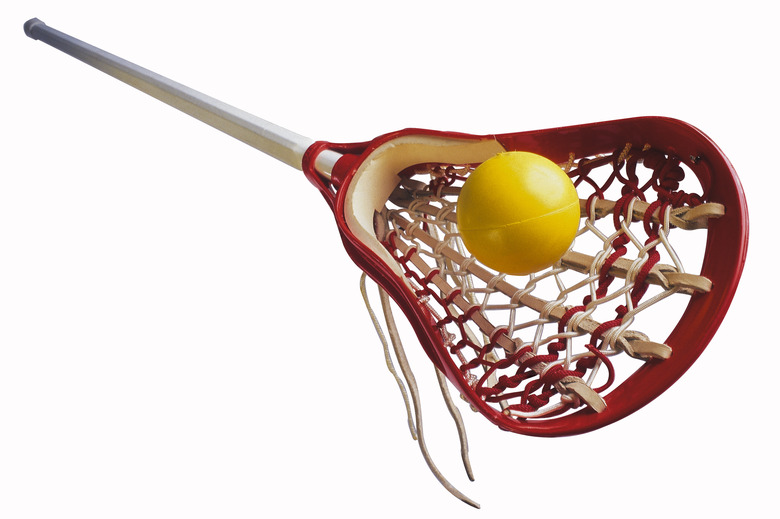A Lacrosse Shooting Science Fair Project
Lacrosse is a team sport in which opposing sides use sticks with small baskets at the ends and a small, rubber ball. Players attempt to carry and pass the ball down the field and shoot it into their opponents' goal. In this experiment, your students will compare the velocity of a lacrosse shot to a freehand pitch and learn about how tools affect mechanical energy.
Materials and Preparation
Materials and Preparation
For this experiment, you will need one lacrosse stick, one rubber lacrosse ball, a radar gun, writing materials and three volunteers. Conduct the experiment in an open area, such as a soccer or baseball field. If possible, try to use volunteers who comprise a wide variety of ages and physical abilities, which will give you a broader data sample from which to draw your conclusions.
Hypothesis
Hypothesis
In this experiment, you will test whether an average person is able to make a lacrosse ball achieve a higher velocity by shooting it with a lacrosse stick or throwing it barehanded, similar to a baseball pitch. Write a hypothesis in one or two sentences predicting the outcome of the experiment and explaining your prediction scientifically. If you are unsure of the result, do some research on the mechanics involved in both ways of throwing balls.
Procedure
Procedure
Set up the radar gun in the open space you selected at a distance far enough that you won't potentially be hit. Instruct each of your volunteers to take five shots with the lacrosse stick and five freehand pitches, in both cases throwing as hard as they can, and measure their maximum velocity with the radar. If your volunteers are unfamiliar with using a lacrosse stick, instruct them to hold the stick with their dominant hand about a foot above the lower end and their other hand on the end itself, pull it back over their shoulders and shoot the ball forward.
Conclusion
Conclusion
Write a conclusion that either confirms or refutes the hypothesis. If your hypothesis was incorrect, you also need to find a scientific explanation for why the results were different than you expected. While it is possible that some of volunteers may have thrown the ball barehanded faster a few times, particularly if they have experience with baseball, in general the lacrosse shots should have been faster. This is because the lacrosse stick acts like a lever, with the hand acting as the fulcrum. The arm acts in a similar way, but the increased length of the stick creates more mechanical energy, making the ball go faster.
Cite This Article
MLA
Corbett, Kevin. "A Lacrosse Shooting Science Fair Project" sciencing.com, https://www.sciencing.com/lacrosse-shooting-science-fair-project-11369424/. 24 April 2017.
APA
Corbett, Kevin. (2017, April 24). A Lacrosse Shooting Science Fair Project. sciencing.com. Retrieved from https://www.sciencing.com/lacrosse-shooting-science-fair-project-11369424/
Chicago
Corbett, Kevin. A Lacrosse Shooting Science Fair Project last modified August 30, 2022. https://www.sciencing.com/lacrosse-shooting-science-fair-project-11369424/
